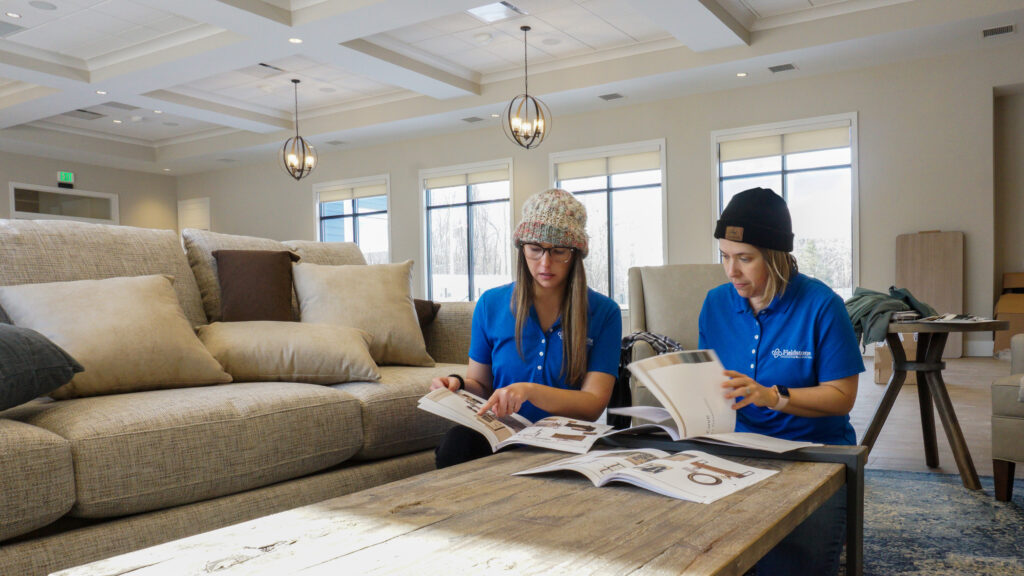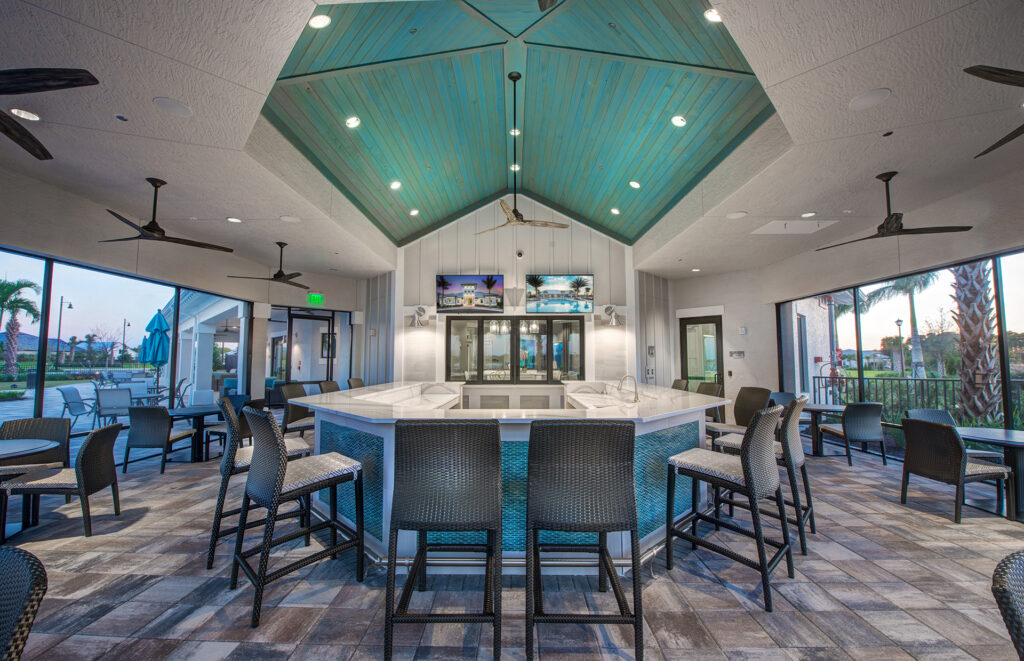Here at Fieldstone A&E, a great deal of planning goes into every interior design project. We sat down with Interior Design Manager Natasha Ellis and Interior Designer Courtney Powers to better understand the team’s process and approach to developing a successful Interior Design project.

What are the parameters of a Fieldstone A&E Interior Design project?
Our core market in the commercial segment is with homebuilders and developers, explains Natasha Ellis. This includes social buildings like clubhouses, fitness centers, and on-campus restaurants. We have also done some light commercial work in the retail and restaurant segments. From a budget standpoint, we can run anywhere from economical cabanas to exclusive high-end clubhouses. Typically, we are involved early in the design process where we can comment on the architectural design, helping to create a cohesive building start to finish for our client. We make all the selections on the building (interior and exterior) from typical finishes such as flooring, light fixtures, trims, and moldings to fine details such as grouts and transition strips; essentially everything attached to the building. Fieldstone A&E also provides furniture, art and accessory selections, budget development, procurement, installations, color blocking, 3D rendering and construction administration with value engineering. We can provide a full-scope service to our clients, which minimizes stress, cost, and the number of points of contact required.

Are there any classic staples you refer to when designing a space?
According to Ellis, clients usually request a “lite” application of a theme, such as a Coastal or Mediterranean style, since most of Fieldstone A&E’s work is in Florida. We strive to include that; however, we also lean heavily toward transitional design. Our goal is that it will not fit into any specific category, so a project does not look especially modern or overly traditional. Focusing on transitional aims to be appealing to all ages and is timeless, ensuring the interior design style does not become stagnant. At the end of the day, we can accomplish any “look” or “feel” our clients desire.
What if a client has a partnership with a vendor they would like to use in the project?
There are certain vendors and materials that are required as a commercial standard, says Ellis. For example, flooring is a huge factor when designing a space. We must ensure the durability is there, and that it has other qualities like being slip-resistant for safety measures. We follow the same process with furniture selection. Heavily trafficked areas in the building are going to need commercial grade fabric, which can be cleaned with chemicals or other cleaners, and go through vigorous durability testing. We are always open to discussing vendor partnerships with clients and how we can best utilize those relationships while still using materials that perform in commercial settings. For example, if a client has a partnership with Moen for faucets, we have no problem including that in our design. Some vendors also have commercial segments that allow us to preserve the partnership while using commercial grade materials. Overall, we need to ensure that the selections are high quality, safe, and durable for our clients.
Can you talk more about popular trends and styles we might be seeing more in the next year?
According to Interior Designer Courtney Powers, the cooler color palettes are on the way out. We are seeing the return of warmer palettes with deep, richer colors. We are also seeing the influence of past trends being combined with current designs; specifically, Renaissance design is popping up. More curves are coming back such as arched doorways and curved furniture pieces. Simpler, darker color palettes with gold accents are appearing in accessories, light fixtures, and upholstery. Texture and detail are being introduced without being overwhelming, adding a feel of luxury to a space. It’s a more modern take on Renaissance design.
Ellis adds as far as specific client requests go; they want to bring local flair into their buildings. They want to support local vendors and artists, aiming to make the building seem more unique, relatable, and cultured for their residents and clientele.

What is your favorite part of the design process?
Powers says she likes the start of the Design Development phase, when you’re just starting to select finishes and decide where the main design features will be located. The project can go in a million directions. In this phase, nothing is set in stone, and you are slowly starting to put your vision for the project together.
If you would like to contact the Interior Design team for more information, or to inquire about an upcoming project you may have, email info@fieldstoneae.com or call (813) 466-3310.

